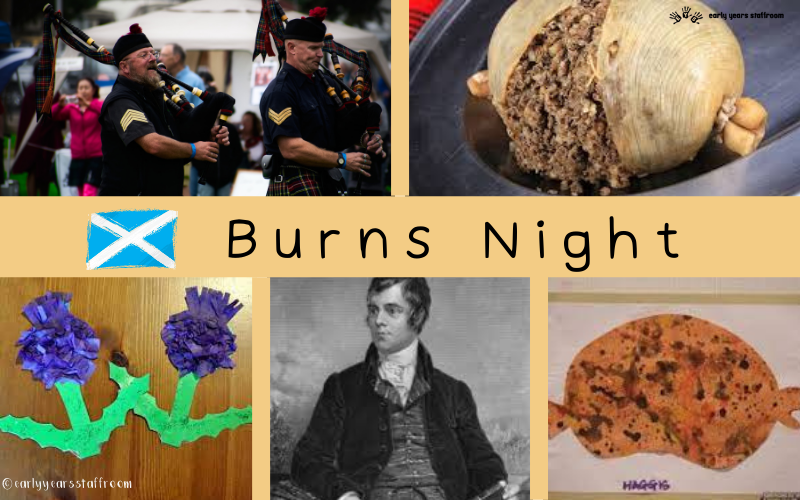

Burns Night is a Scottish celebration held annually on January 25th to honor the life and works of the Scottish poet Robert Burns. In an early years setting, educators can introduce children to Burns Night and its significance in a fun and age-appropriate manner.
Here are some ideas for celebrating Burns Night your early years setting :
Scottish Music and Dance: Introduce children to traditional Scottish music and dances, such as ceilidh dancing or the Highland Fling. Play recordings of Scottish songs or invite a guest speaker to demonstrate traditional Scottish dances. Encourage children to participate and learn some simple dance steps.
Art and Craft: Organize art and craft activities related to Burns Night, such as creating paper thistles (the national flower of Scotland), making tartan patterns with colored paper strips, or drawing images inspired by Scottish landscapes or symbols.
Scottish Language: Teach children some basic Scots words and phrases, such as “aye” (yes), “naw” (no), “wee” (small), and “bonnie” (beautiful). Incorporate the new vocabulary into daily routines and activities to reinforce learning.
Food Tasting: Prepare or bring in traditional Scottish snacks, such as shortbread, oatcakes, or haggis (consider using a vegetarian version for a more child-friendly option). Make sure to consider any dietary restrictions or allergies among the children. Discuss the ingredients used in Scottish cuisine and the importance of food in Scottish culture.
Parent Involvement: Invite parents who have a connection to Scottish culture or who have lived in Scotland to share their experiences, traditions, or skills (such as Scottish cooking, dancing, or storytelling) with the children.
By incorporating Burns Night celebrations into your early years setting, you can introduce children to the rich cultural heritage of Scotland and promote understanding and appreciation of diverse traditions.